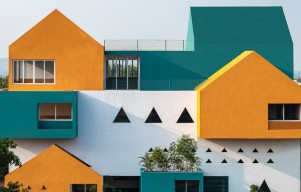2017 AIA Conference on Architecture was recently lambasted for only having all-male speaker lineup. Hence, the issue of gender diversity in architecture is once again revisited. And It just seems timely to reevaluate feminism on the male-dominated field.
According to Archinect, it interviewed ArchiteXX co-founder and Syracuse University School of Architecture professor Lori Brown. The discussion was about feminism in architecture. She shared her thoughts about its meaning, especially in design.
Brown was asked about feminist design versus a female-absent design difference. To which she responded that the first address social parity more.
Further, the professor also said that the goal of feminism is not to surpass anyone. It's only to get equal opportunity to be considered. And in architecture, women architects applies the same idea.
2017 AIA Conference committee may have a little bit over-run the "feminism fairness" recently. The foundation's goal this year was to feature more architecture diversity yet it forgot to include a woman architect speaker.
The feminism concern sparked an open letter effort from many US architects. "If the AIA was serious about changing its image then they should lead the profession and put forward a panel of keynote speakers that is reflective of the diversity in architecture," a part of the letter said, as reported by Dezeen.
On the same report, it likewise reassessed "gender parity" in architecture. It noted how AIA itself had a survey for it then found saddening feminism results. Seventy percent of most female architects and architecture students still don't believe in co-equality in their profession.
Even National Museum of African and American History and Culture lead designer David Adjaye believes the same thing. He focused on the fact that feminism is still out in architecture.
To end, 2017 AIA Conference just added Elizabeth Diller in answer to the people outrage. Hopefully, this answer will be the first step towards feminism in architecture.


















